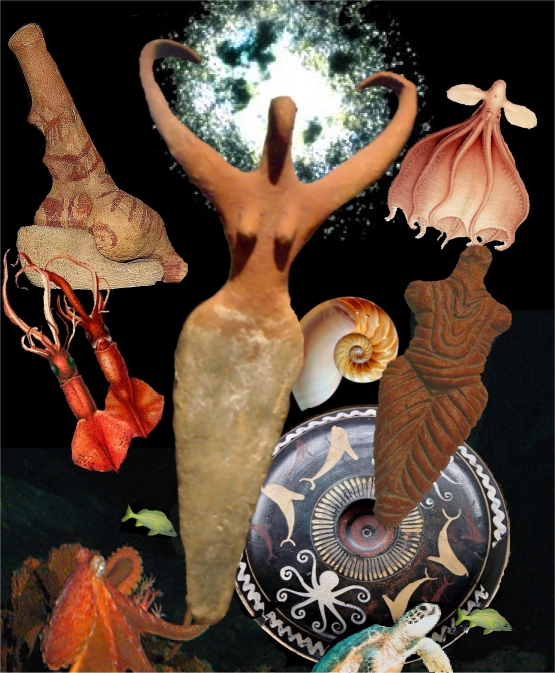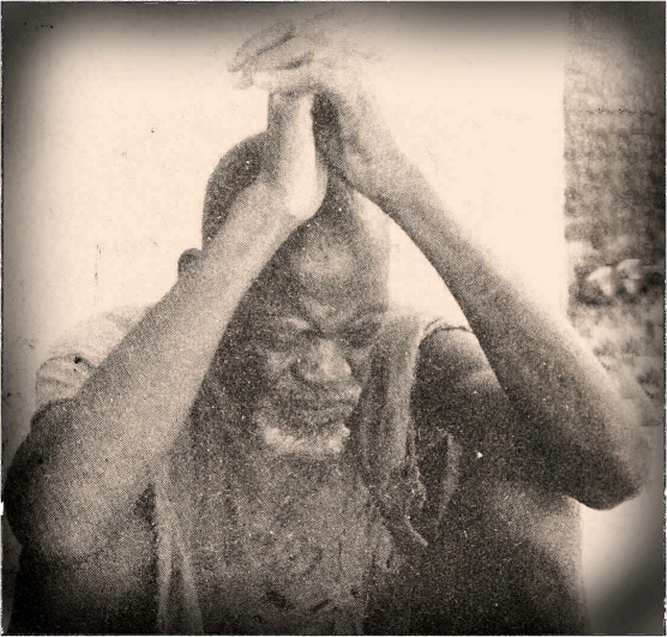
Alien Water BeingsCover of Day of the Fish by Shannon Dorey
Alien Nummo
My books are based on the beliefs of the Dogon people of Mali, Africa, who spoke of alien water beings known as Nummo, who came from space, and formed the basis of their religon.
The French anthropologists Marcel Griaule and Germaine Dieterlen lived for over 20 years in Mali recording the Dogon religion and my research is based on their findings. I've been studying the Dogon religion since 1999 and have written four books about it.
The Dogon religion is a mystery religion, and I believe it is the pagan mystery religion that was thought to have been lost to humanity. The reason this religion survived with the Dogon people is because they were isolated from the rest of the world and continued to practice their religion even though it had been lost in most other places.
It is by studying Dogon symbols in comparison to other ancient religions that we can uncover the truth about our past. These ancient symbols are universal and appear in every ancient religion I have studied. They form the basis of Christianity and Judaism.
The Dogon elder Ogotemmêli, who attempted to teach the key stories and symbols to Griaule in 1946, took over 20 years to learn his own religion. This gives you some idea of its complexity.

Ogotemmêli
Marcel Griaule established a relationship with the Dogon people during field trips, which began in 1931. After years of questioning the Dogon elders about the religion, the Dogon finally agreed to let Griaule in on the religion's innermost teachings. Ogotemmêli was chosen to present the secret knowledge to Griaule. This was done in 33 days, which began in October of 1946. This picture of Ogotemmêli is from Griaule's book, Dieu d'eau, which was published in 1948.
Ogotemmêli was considered one of the most powerful minds on the Cliff of Bandiagara in Mali where the Dogon lived. It had taken him over 20 years to learn his religion, which he learned first from his grandfather and then his father. It was because of Ogotemmêli, that Griaule recorded the religion so accurately. Without this accuracy it would have been impossible for me or any other researcher to decipher it.
Ogotemmêli became completely blind as a result of a hunting accident later in life. After his accident, he devoted his time to his religion and to offering advice and powders to people who came to visit him on the cliffs. The Dogon people had a system of signs which ran into the thousands, including "their own systems of astronomy and calendrical measurements, methods of calculation and extensive anatomical and physiological knowledge, as well as a systematic pharmacopoeia." He was the most knowledgeable of the Dogon elders and famous throughout the hills and plateau.Conversations with Ogotemmêli, Griaule, p. 14-15

Shannon Dorey
I've spent the last 25 years of my life researching and writing about the African Dogon religion because I believe it's as close to the world's first religion that we are ever likely to get.
I have devoted so much of my time to this religion because there is a spiritual component to it that needs to be addressed and understood. It is a spiritualism that is associated with the Earth and involves our genetic connection to our environment. It is based on vibrations that tie us to the cosmos and connects us to all life and matter in the universe.
The first version of The Master (Mistress) of Speech was published in 2002 and more recently in 2018.The Nummo was first published in 2004 and more recently in 2019. Day of the Fish was first publised in 2012 and revised in 2017 and 2022. This is a second revised edition of The Rose, which came out in 2022. You can buy my books at Purchase Books. You can read more at Books.
Check out more from my Articles Index
Join my YouTube channel to watch videos about the Alien Nummo. This is the first video in the series Who Were the Alien Nummo? This is the second video The Serpent-like Aspect of the Alien Nummo in Human History This is the third video The Nummos' Twinness in Ancient Cultures. This is the fourth video The Nummos' Duality and Balance in the Universe.